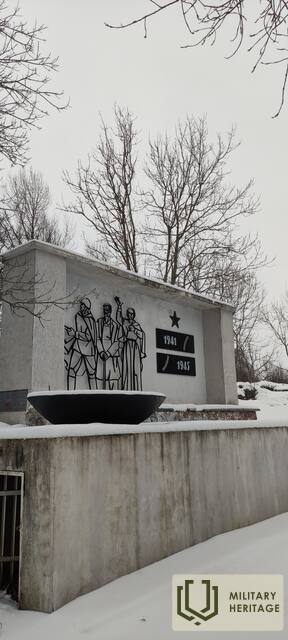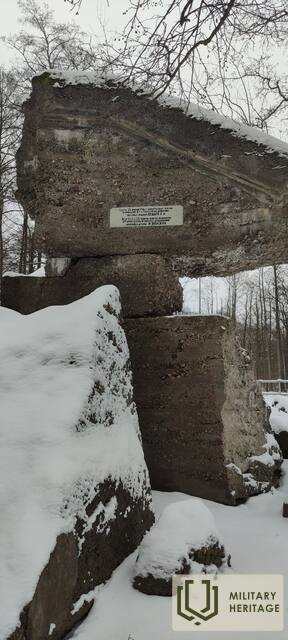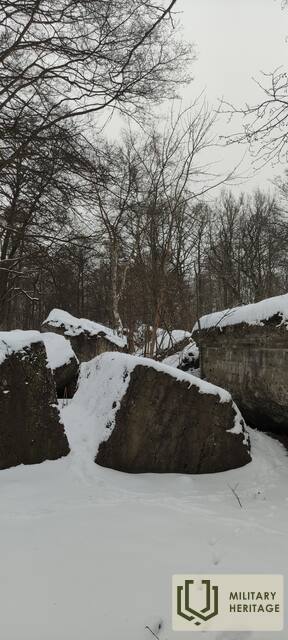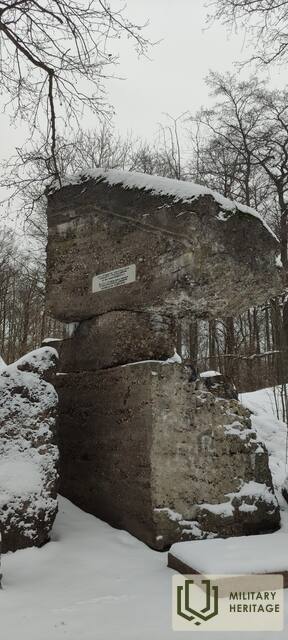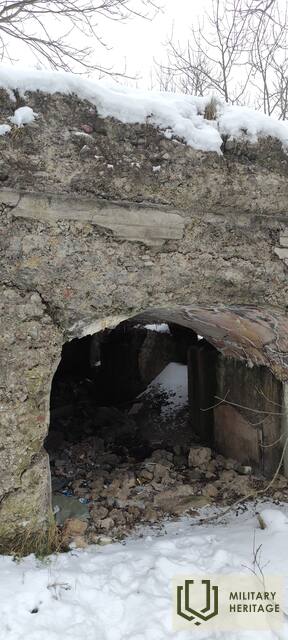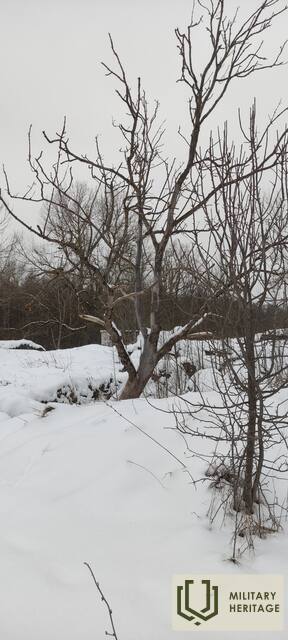Liepaja Fortress Middle Fort and Monument to the Soldiers of the Red Army
Įtvirtinimas

The most dangerous direction of attack for the port of Emperor Alexander III was from the east between the lakes of Tosmare and Liepāja, where there was a 2.5 km wide strait of land. Three fortifications were built to defend the land strip. On the southern shore of Lake Tosmare there was a left redoubt, on the northern shore of Lake Liepāja a right redoubt, and between the redoubts there was a Middle Fort. The Middle Fort was the most serious fortification of the Liepaja Fortress, but it was not fully completed and artillery was not deployed until 1908.
It was at the Middle Fort that the most serious battles took place in April 1915, when German troops attacked, in November 1919 during the Latvian Army's battles against the West Russian Liberation Army, and in June 1941, when Liepāja was attacked by the 291st Infantry Division of the German Armored Forces.
In June 1941, when hostilities between Nazi Germany and the Soviet Union broke out, the Liepaja garrison of the Soviet Army consisted of units of the Liepaja naval base of the Navy and the Red Army. The Liepaja naval base consisted of mine trawler, torpedo boat and submarine divisions, including former Latvian Navy ships and submarines. The coastal defence was carried out by the 23rd and 27th artillery batteries with 130 mm guns and the 18th railway artillery battery with 180 mm guns, covered by two Zenith artillery divisions. The base also included several sapper, repair, liaison and training units, totalling some 4 000 soldiers, commanded by Captain M. Klevenski, 1st rank. Of the Red Army units, the garrison was manned by the 67th Rifle Division (minus the 114th Rifle Regiment and one artillery division), commanded by Major-General N. Dedaev. The division had about 9000 soldiers before the outbreak of hostilities. The 143rd Fighter Aviation Regiment with 68 aircraft of various types was stationed at Liepāja airfield. In addition, the 12th Border Guard Unit operated in the Liepāja area.
The battle action at the Liepaja Fortress began in the early morning of 24 June 1941. Despite the Soviet losses, the German units were unable to break through the Liepaja Fortress rampart on 25 June. The fighting in Liepāja ended on 27 and 28 June, when Soviet units tried to break northwards.
Panaudoti šaltiniai ir literatūra:
The government supports the dismantling of 69 monuments glorifying the Soviet and Nazi regimes / Article (lsm.lv)
List of objects glorifying the Soviet and Nazi regimes on the territory of the Republic of Latvia to be dismantled (likumi.lv)
Susijusi laiko juosta
Susijusi istorija
Generolo majoro N. Dedajevo sužalojimas Liepojos tvirtovėje, Vidaus forte
1941 m. birželį sėkmingas vokiečių kariuomenės puolimas buvo pasiekęs Liepoją, kai Liepoją užpuolė Vokietijos šarvuotųjų pajėgų 291-oji pėstininkų divizija. 1941 m. birželį prasidėjus karo veiksmams tarp nacistinės Vokietijos ir Sovietų Sąjungos, sovietų armijos Liepojos garnizoną sudarė karinio jūrų laivyno ir Raudonosios armijos Liepojos karinės jūrų bazės kariai. Šių kautynių metu buvo mirtinai sužeistas generolas majoras N.Dedajevas
Istorija apie išardytą paminklą Raudonosios armijos 67-osios šaulių divizijos vadui N. Dedajevui.
Į šiaurę nuo Pietinio forto yra didžiausios Liepojos kapinės – Centrinės kapinės. Pietinėje kapinių dalyje yra Raudonosios armijos kapinės, kuriose perlaidoti Liepojos apylinkėse žuvę sovietų kariai, tarp jų – 67-osios šaulių divizijos vadas generolas majoras Nikolajus Dedajevas, 1941 metų birželį vadovavęs Liepojos gynybai.




